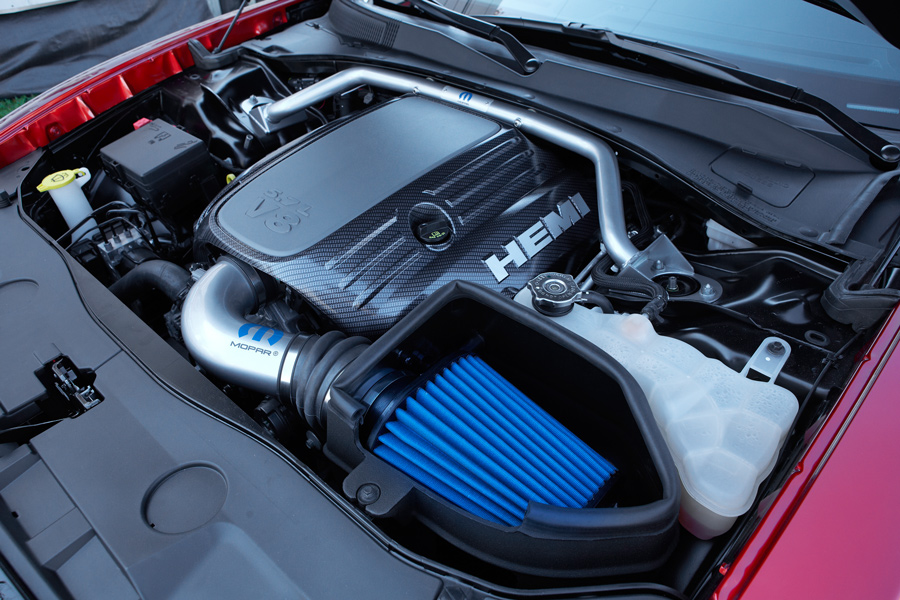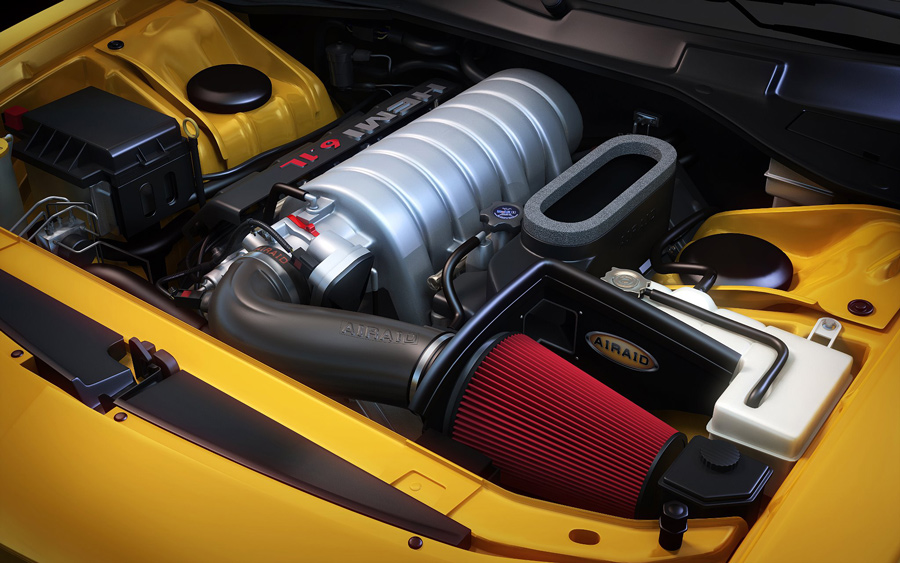2. Increased Acceleration
You may feel cold air intake benefits every time you push the accelerator pedal, as cold air intake kit can increase vehicle's responsiveness. When larger amount of cold air is delivered to the engine, the vehicle reaches desired speed faster. So if you enjoy speedy acceleration, consider installing a CAI on your car.
3. Improved Gas Mileage
As you already know, internal combustion engines produce power by burning fuel, and the right amount of oxygen pumped through the engine is essential for this process, and the lack of oxygen causes increased fuel consumption. Will a cold air intake improve gas mileage? Yes, it will. Cold air intake kits are designed to ensure an optimum air to fuel ratio, that will provide horsepower gains and fuel economy improvement. As you can see, cold air intake and mpg increase are interconnected. Decreasing your gas expenses is another of benefits of a cold air intake system.
4. Enhanced Sound
If you enjoy roaring sound of the engine, you've found another reason to install a cold air intake on your vehicle. What does cold air intake do to an engine's sound? Stock air intakes are designed to work quiet, while cold air intakes are made to improve performance. Increased amount of air sucked in by a cold air intake and, as a result, more intense air flow produce that throaty growl, desired by many vehicle owners. Along with performance exhaust system, cold air intake is able to change the way your vehicle sounds completely.
5. Spend Less on Filters
Stock air intake systems are typically equipped with paper air filters, that require replacement every 15,000 miles. Aftermarket cold air intakes, instead, come with air filters that have to be cleaned every 30,000 to 40,000 miles. Cleaning air filters is fast and easy, you just need to wash it in a soapy water and rinse throughly in clean cold water. No special tools or skills are needed! You can find instructions on how to clean air filter in instruction book that comes with a cold air intake kit.
Cold Air Intake vs Short Ram Air Intake
Another popular air intake modification is short ram air intake. It's fundamental difference from cold air intake is the way short ram intake is designed.
Cold air intake is made to move an air filter away from the heat of the engine, typically to the car's fender or behind the engine, as cold air intake's purpose is to deliver cooler air. Short ram intakes, instead, have the same size and location as those of your stock intake. But they come with smoother tubes and air filter, that doesn't require to be replaced. It helps to deliver air more efficiently compared to stock air intake, though HP and MPG gains from installing short ram intake are smaller in versus equal cold air intake.
The price of short ram air intakes is lower than of cold air intake kits, as they have less tubing. For the same reason, the installation of short ram intakes is way easier.
Advantages of Short Ram Intake vs Cold Air Intake
- more affordable price;
- easier installation.
Disadvantages of Short Ram Air Intake
- lower horsepower gains;
- worse fuel economy.
Do Cold Air Intakes Work?
While causal drivers may not be concerned about this extra power cold air intake can add, those who want to turn their vehicles into high-performance machines know, that adding some extra HP may make a great difference. And if you're wondering if cold air intakes worth it, check out what experts think about it:
Q: How much hp does a cold air intake add?
A: It depends on a particular vehicle. Dyno tests show, that cold air intakes from top manufacturers may add from 5 to 12 horsepower.
Q: Does cold air intake increases MPG?
A: Yes, the efficiency of a cold air intake and gas mileage are connected. The more air is delivered to the engine, the less fuel is used. So installing a cold air intake is good for fuel economy.
Q: What is heat soak?
A: As we have mentioned before, the main purpose of cold air intake is to suck in big amounts of cold air. But because engine produces a lot of heat, temperature of air intake pipes may increase too. So, it heats up the air that is going through it. This issue is called heat soak and is common for cheap cold air intakes. Cold air intakes from top brands are made from high-quality aluminum and other materials, that don't allow the air too hot. What's more, many cold air intakes come with a heat shield that isolates cold air from engine's heat. Read about best cold air intakes below.
Q: Are cold air intakes legal?
A: Yes, they are street legal in the most of the states. There are some states, such as California, where safe emissions standards demand air intakes to be inspected by the California Air Resources Board (CARB). Not all manufacturers submin their intakes to CARB. But industry leading manufacturers as K&N near to all of their cold air intakes approved by CARB. Read about best cold air intake brands below.
Q: Are cold air intakes worth it?
A: We believe, they are. Though goals, driving styles and conditions are unique for every driver, so the answer to this question may vary too. But even if HP gain is not your goal, better fuel economy and more durable air filters is something every driver may appreciate.
Best Cold Air Intake Brands
Choosing a cold air intake kit from a reliable manufacturer is essential for experiencing all cool air intake benefits, as installing low-quality intake may have no effect in terms of performance, but also decrease gas mileage. Cold air intakes from top brands are designed according to high quality standards from the durable wear-resistant materials. That's why their price may be higher that the one of other manufacturers. But when you buy such product, you pay for research, innovations, technology development and testing, that ensure longevity and efficiency of your cold air intake kit.
So who makes the best cold air intakes? We've selected for you 5 of the best air intake brands.
- 1. K&N cold air intakes;
- 2. Airaid cold air intakes;
- 3. AEM cold air intakes;
- 4. Volant cold air intakes;
- 5. Spectre cold air intakes.











